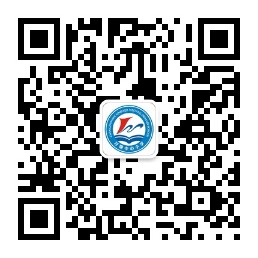六年级上册 第六单元
第1课时 教案
Teaching contents 教学内容
Story time & Song time
Teaching aims and learning objectives 教学目标
1. 能听懂、会读、会说:keep, clean, make, air, dirty, smoke, rubbish, messy, dead, bin, move … away from, plant, more。
2. 能听懂、会读、会说日常用语:What makes …dirty/messy?、… make(s) …dirty/ messy.、What can we do to …?、We can …。
3. 能正确地理解并朗读对话内容,在教师的引导和帮助下尝试复述课文内容。
4. 能初步运用本课所学的词汇和日常用语谈论城市的污染问题,并能说出多种解决方案。
5. 能正确演唱歌曲“Two little blackbirds”。
Focus of the lesson and predicted area of difficulty 教学重点和难点
教学重点:能正确地理解并朗读对话内容,在教师的引导和帮助下复述课文内容。
教学难点:能初步运用本课所学的词汇和日常用语谈论城市的污染问题,并能说出多种解决方案。
Teaching procedures 教学过程
Step 1 Greeting & Sing a song
1. Greeting
T: Hello, boys and girls.
S: Hello, Mr/Miss …
T: Nice to meet you.
S: Nice to meet you, too.
2. Sing a song
T: I have two animal friends, one named Jack and one named Jill. Do you want to meet them?
S: Yes.
T: OK, listen! Here they are. (播放歌曲“Two little blackbirds”一遍)
T: Do you like this song? Now follow me. (老师带着学生用手势表示歌词内容,学生边唱边学做动作) This time, let’s try to sing and do some actions together.
(再次播放歌曲,学生加上动作一起唱)
【设计意图:让学生体会named, fly away, come back的意思,让学生在欢快的音乐中开始一堂新课,也为下一步学习进行铺垫,通过歌曲中自由飞翔的小鸟引出城市环境这一话题。】
Step 2 Presentation
1. Talk about City A
T: A lovely song, yes?
S: …
T: (教师利用歌曲“Two little blackbirds”向学生提出几个关于鸟的话题)
Do you like birds?
What birds do you know?
Can you see any birds in our city?
Where can you see any birds?
T: I’ll show you some pictures. (向学生展示一组风景优美、环境幽雅的城市图片,然后提出问题让学生思考和讨论,引入话题) These pictures are of City A. What can you see in the pictures?
S1: I can see a lot of beautiful flowers and trees.
S2: I can see many birds. They are flying high in the sky.
S3: I can see a clean river.
S4: I can see a clean road.
S5: I can see a lot of beautiful flowers and trees.
S6: I can see some nice houses.
S7: I can see some tall buildings.
…
T: Do you like this city? Why?
S: …
【设计意图:让学生看图片进行讨论,激发学生思维,形成良好的学习氛围。】
2. Talk about City B
T: OK. Now let’s look at some pictures of City B. (用PPT展示另外一组城市图片) Is it clean?
S: No.
T: It’s not clean. It’s dirty. (新授dirty,让学生跟读几遍)
T: What can you see in the river? (用PPT呈现河流的图片)
S: I can see some fish.
T: The fish are dead. (新授dead,让学生跟读几遍) And the river is _____.
S: Dirty. (教师用口型帮助学生说出这个新单词)
T: The river is dirty. There’s rubbish and dead fish. (同样方法新授rubbish) So rubbish makes the river dirty. (展示句子… makes … dirty,并让学生跟读几遍)
【设计意图:通过对河流图片的讨论,帮助学生理解dead, rubbish,并引出句子… makes …dirty。】
T: What can you see in the street? (用PPT呈现街道的图片)
S: I can see a lot of rubbish.
T: How do you think of the street?
S: It’s dirty.
T: Yes, it’s dirty and it’s messy, too. (展示单词messy) So what makes the streets messy and dirty?
S: Rubbish makes the streets messy and dirty.
T: Please follow me:
—What makes the streets messy and dirty?
—Rubbish makes the streets messy and dirty.
S: (跟着老师朗读句子)
【设计意图:通过对街道图片的讨论,帮助学生理解messy,并引出问句What makes … dirty?】
T: What makes the air dirty? (用PPT呈现一组空气污染的图片)
S: Smoke.
T: Where is the smoke from?
S: It’s from cars./It’s from factories. (教师展示汽车和工厂污染图片和相应短语)
T: So what makes the air dirty?
S: …
【设计意图:通过对河流和街道图片的讨论,引出本单元的句子结构后,让学生通过对空气图片的讨论,自己总结出答案。】
Step 3 Story time
1. Watch and choose
(教师播放课文视频第一部分内容,即书本第58页内容。让学生初步了解课文大意,观看后完成两道简单的选择题:(1) Who are in the passage? (2) What’s the title of this passage?)
2. Read and find
(教师让学生带着问题What makes our city clean?自读课文第一部分,进一步了解课文内容。教师提醒学生边读边将重点句划出来。随后,学生分组讨论问题,用句型… makes … dirty.进行回答)
3. Ask and answer
T: Look at these pictures of our city. Is the city clean? What makes our city dirty? Talk about it with your deskmates. (完成教材第60页Ask and answer)
S: …
4. Listen and think
T: What can we do to keep our city clean? Listen to the dialogue and find the answers.
(学生仔细听课文第二部分录音,边听边思考问题;教师通过PPT呈现句型、图片及关键性动词put, walk, move, plant,让学生能将单词组词,在老师的引导下,给出回答We can …)
【设计意图:通过让学生观察图片和所给的提示单词,进行独立思考并找到问题的多种答案,培养学生的语言组织能力和自主学习的能力。】
5. Think and write
T: You have so many good ideas. Try to write them down. (展示教材第60页 Think and write) Now you can begin.
S: (完成练习)
6. Listen and read
(教师播放第58和59页课文的录音,要求学生模仿跟读,并选择一种喜欢的方式朗读课文,如分角色朗读、齐读等)
7. Retell Story time
(教师与个别学生进行问答活动,回顾课文内容)
T: What makes the city dirty?
S1: …
T: What can we do to keep the city clean?
S2: …
Step 4 Make a poster
T: Better city, better life. Boys and girls, let’s do something to keep our city clean. What can we do? Let’s keep our classroom clean first. Let’s make a poster to keep our classroom clean.
(学生以小组为单位合作完成一张海报,在海报上标明自己所在组的组号;每个人在叶子上用We can …写下自己的建议;最后用写好的叶子装饰自己的海报,比一比谁的叶子多。在三分钟内完成)
Homework 家庭作业
1. Copy the new words.
2. Read and recite Story time.
3. Make a poster about keeping the city clean. (可以与他人合作,也可以和家人一起完成)
Teaching aids 教学准备(含板书设计)
教学准备:PPT课件、制作海报的铅画纸、写建议的树叶(彩色卡纸)。
板书设计:
Unit 6 Keep our city clean
What makes our city dirty? | What can we do to keep our city clean? | ||||
Smoke from cars | make(s) | the air | dirty. | We can | take the bus and metro to school. |
Smoke from factories | the streets | walk to school. | |||
move some factories away from our city. | |||||
Rubbish | the rivers | put rubbish in the bin. | |||
plant more trees. | |||||
说课
本节课以歌曲导入新知,歌曲中两只自由欢快的小鸟把学生一下子引领到一个干净、优美的自然环境中。教师通过与学生一系列的对话互动,逐步引出本课话题:城市环境问题。接着,通过一组城市图片,让学生展开对城市A的讨论,让学生通过观察来描述干净、整洁的城市A。当学生们正沉浸在美的感受中时,一组不协调的城市B照片适时展现出来,与之前的城市A形成鲜明对比,让学生从感官上对dirty和messy产生联想。学生从学过的句型I can see … 开始探讨,在老师的引导下逐渐转用新句型 … make(s) … dirty/messy进行讨论,分别谈论了河道、街道和空气的污染源。
在课文学习部分,教师将这篇对话分成了两个部分。第一部分,先要求学生带着两个简单任务观看课文视频,旨在对课文第一部分有个初步印象。然后,让学生自读课文,对课文作进一步了解,这次学生可以找出该部分的中心句What makes our city dirty? ,并在文中逐一找出答案。在学生完全解读文本的基础上,可以让学生操练教材第60页上的Ask and answer,该环节巩固了第一部分出现的句型Is the … clean?、What makes … dirty?。课文第二部分是先用听力练习的形式呈现的,让学生带着What can we do to keep our city clean?的疑问听该部分,教师通过PPT呈现句型、图片及关键性动词put, walk, move, plant,让学生能将单词组词,让学生观察图片和所给的提示单词,进行独立思考并找到问题的多种答案,培养学生的语言组织能力和自主学习的能力。然后通过教材第60页上的练习Think and write,巩固这部分内容。分段学习完课文后,让学生通过不同形式的读来完整解读课文,教师在这个过程中纠正和规范语音语调,指导学生朗读。
在语言输出部分,设计了复述课文和制作海报的环节。制作海报是学生喜爱的活动,通过这个环节,即巩固操练新授内容,又联系了生活实际,让他们意识到环境卫生的重要性,要从身边做起,创造美好的生活环境。
本节课的几个主要关注点:
l 关注学生对课文的整体感知和细节信息的获取
l 关注学生的朗读,注重指导
l 关注学生的合作性学习
l 关注学生的阅读习惯,指导学生找关键词、句,根据上下文的意思猜出生词的意思

